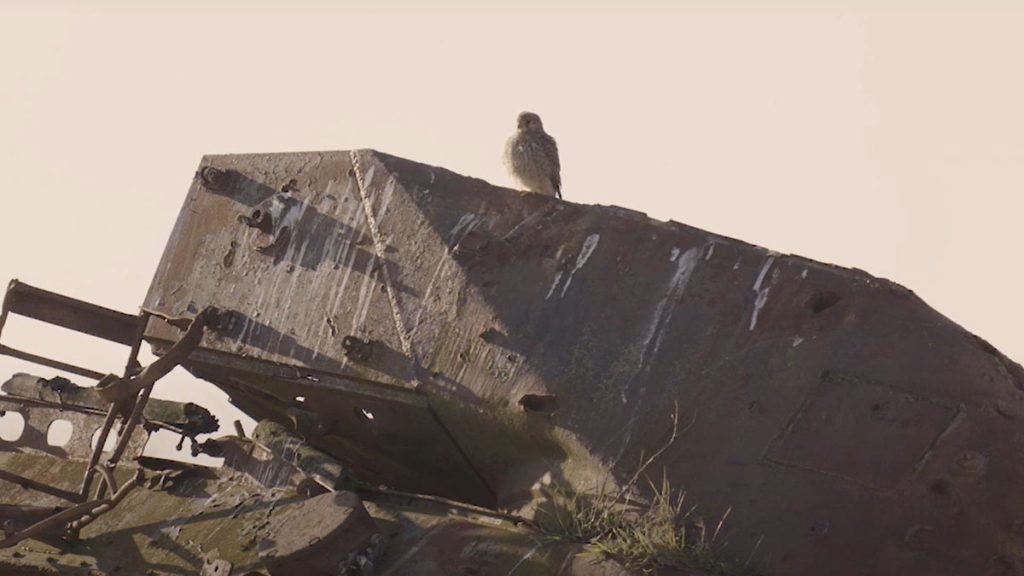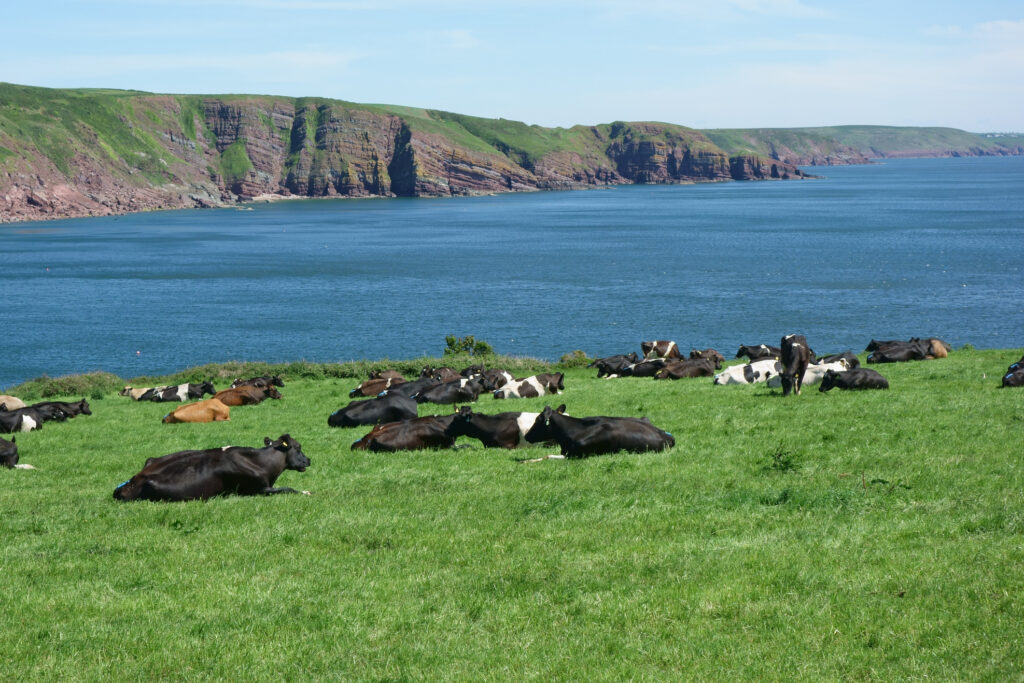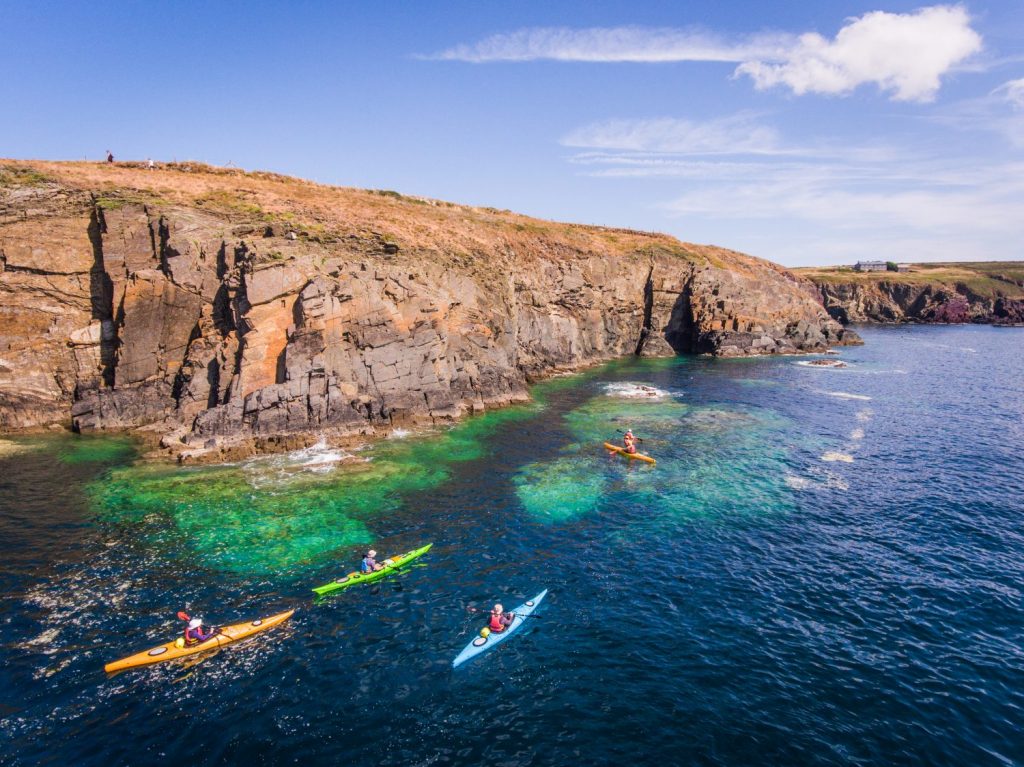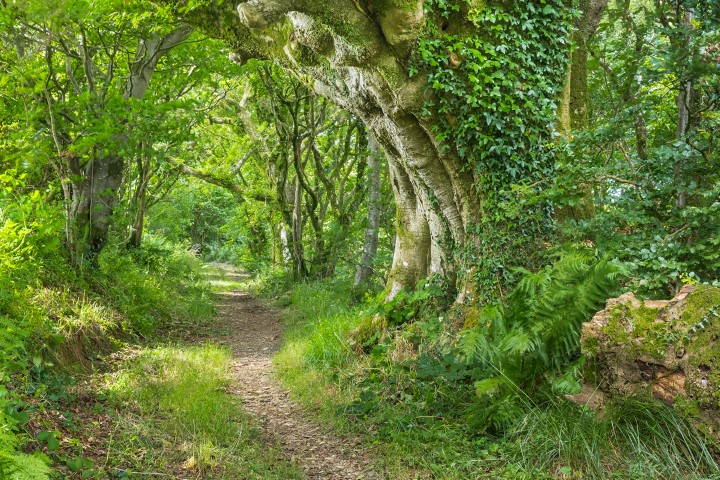During World War II St Davids Airfield was the scene of constant activity as an RAF Coastal Command base engaged in the Battle of the Atlantic. Today, St Davids Airfield is a peaceful place. In spring, skylarks now fill the air with their persistent song.
In the mid 1990s the National Park Authority bought most of the disused airfield and began a major landscaping project to restore and recreate wildlife habitats and safeguard public access and enjoyment. The remainder of the airfield was returned to farming use.
Part of the airfield is now classed as a Site of Special Scientific Interest (SSSI) and includes heath and wetland of national importance. The stone circle dates from 2002, when the National Eisteddfod of Wales was hosted on the site.
Conservation
Hay meadows – a skylark success story!
Pembrokeshire Coast National Park Authority worked with the local farmer to manage the grassland as traditional hay meadows. This means only cutting the grass for hay once a season instead of several times. The grass is cut in July to give the wildflowers a chance to seed and so as not to disturb the skylarks.
Skylarks nest on the ground, and cutting earlier than July would destroy their eggs. The meadow now has organic status and is inspected regularly by the Soil Association. These efforts have paid off, as the population of skylarks has doubled since the grassland has been managed in a traditional way.
Heathland
The heathland along the northern side of the airfield has been designated an SSSI (Site of Special Scientific Interest). The heathland is now home to special plants, which provide food and shelter for a wide range of insects, including the rare southern damselfly, marshland fritillary butterfly, green tiger beetle and emperor moth caterpillar.
There is more lowland heath in Pembrokeshire than anywhere else in Wales. Heathlands are areas of small shrubs such as heather and gorse that grow well in poor and often very wet soil. They were created around 5,000 years ago when forests were cleared to make way for farms, and were maintained by cycles of burning and grazing.
As farming practices have changed and become more intense large areas of heathland have disappeared. The area of heathland on St Davids Airfield has been recreated. The old buildings were removed, the topsoil was replaced with clay and turf with heather and gorse laid on top. The area is burned every five years and is grazed in winter by sheep and cattle.
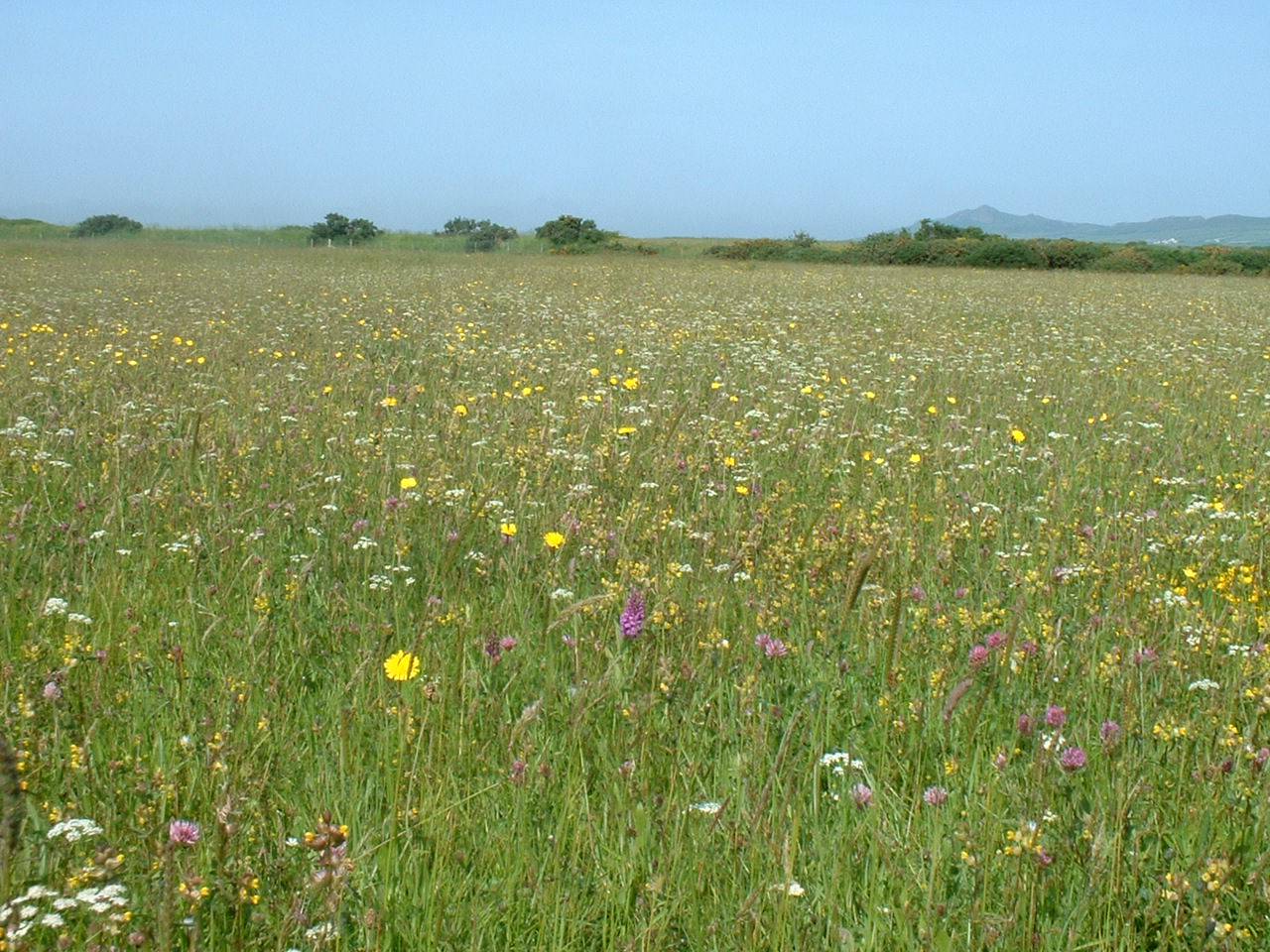
Military History
St Davids Airfield was the last of eight built in Pembrokeshire and was operational during World War II. Unlike the other airfields, it remained in use after the war to support the Royal Navy. In the mid-1990s the Government decided it was surplus to requirements and in 1997 it was bought by the Pembrokeshire Coast National Park Authority.
The fact that it is now the only one of the eight airfields in public ownership means that it is the only one where conservation and preservation is a priority management option. There is also a strong belief that the runways and remaining buildings should be preserved as a historic feature of the landscape.
From agriculture to airfield
Prior to becoming an airfield it was two farms. It is reported that the sand used to build the runways came from nearby Whitesands beach. The farmers had little option but to consent, otherwise they would have been ‘against the war effort’.
World War II activity
The airfield opened in the autumn of 1943 and had the classic three runway layout with control towers and hangars. It operated under Royal Air Force Coastal Command and was home to RAF squadrons who flew Fortress bombers, Halifaxes, and Liberators.
Pembrokeshire’s location at the far west of Wales meant it was ideal for stationing aircraft engaged in the Battle of the Atlantic. The primary aim was to protect Britain’s maritime trade and fight off German U-boats. Trawlers operating out of Milford Haven were particularly vulnerable. St Davids Halifaxes played a significant part in preventing German U-boats and E-boats from attacking the D-Day landing armada. Sometimes planes flew as far as the Bay of Biscay. Other times, they did a short hop across to nearby Brawdy fully laden with bombs, then fuelled up and took off from there, where the runways were better aligned to prevailing weather conditions.
Crashes!
The majority of missions out from St Davids were uneventful, but there were intermittent bursts of battle against U-boats and surface vessels and of course the inevitable crashes. In February 1944, a Halifax was shot down just off the coast by German intruders. Seven Halifaxes went down on the dangerous approaches to the airfield between January 1944 and the following September. After the war ended a Liberator and its four-man crew crashed on the Whitesands road. The crash has been commemorated by the Pembrokeshire Aviation Group and is marked with a slate memorial.
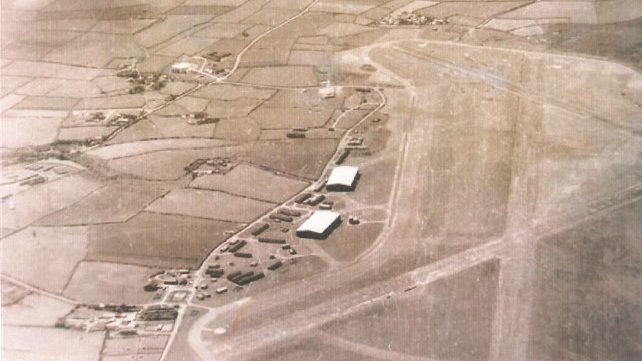
Post war activity
Unlike other Pembrokeshire airfields, St Davids remained in use after the war. It was used to support the Royal Navy from 1951-1960 and later to support the tactical weapons unit at Brawdy from 1974-1992. In 1990-91 the US Navy wanted to install radar on the airfield, but the community vehemently opposed this. By the mid-1990s the government had decided that the airfield was surplus for requirements. With the help of a grant the National Park Authority was able to buy some of the land.
From bombers to butterflies
When the National Park Authority bought the land, it was checked for explosives and cleared of imploded buildings and asbestos. Once safe, hedgebanks were created and improvements to habitat and access began. Areas of land were restored to heathland and hay meadow. It is now an area where wildlife thrives where people can enjoy walking, cycling and horse riding.
